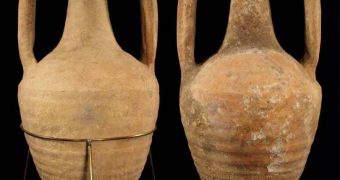Researchers and divers exploring a Roman vessel believed to have sunk nearly 2,000 years ago suspect that this shipwreck is home to several amphorae, i.e. clay jars that contain food.
The ancient vessel rests some 160 feet (50 meters) beneath the sea's surface. It is located off the coast of Varazze, Italy, Live Science reports.
By the looks of it, researchers became aware of the shipwreck's existence thanks to local fishermen, who told them that, over the years, lots of bits and pieces of pottery had kept getting caught in their nets.
With the help of a remotely operated vehicle, underwater archaeologists were able to survey the area where these fragments of pottery had been found and eventually stumbled upon the shipwreck.
Now that the ancient vessel has been discovered, specialists are doing their best to make head and tail of its cargo. Besides, they are trying to keep it safe from thieves.
As Lt. Col. Francesco Chilardi, i.e. the commander of the police diving team that located the ancient ship, explains, “This is an exceptional find.
“Now, our goal is to preserve the ship and keep thieves out. We are executing surveys and excavations to study the contents of the boat, which is perfectly intact.”
The same source tells us researchers have perfectly sound reasons to believe that millennia-old food is hidden inside the shipwreck.
Thus, they are now busy trying to recover several amphorae whose caps of pine and pitch are still very much intact.
Therefore, it is likely that whatever was in these containers at the time the ship sank is still there.
“There are some broken jars around the wreck, but we believe that most of the amphorae inside the ship are still sealed and food-filled,” Lt. Col. Francesco Chilardi explains.
Provided that these amphorae do in fact contain food, the discovery will shed new light on the life and the dietary habits of people living in the Mediterranean region during Roman times.

 14 DAY TRIAL //
14 DAY TRIAL //